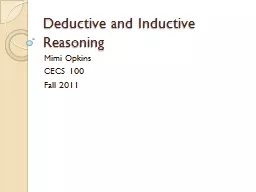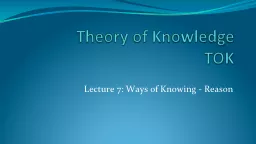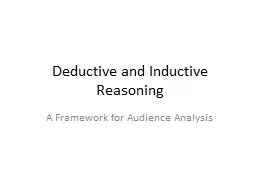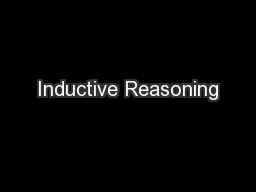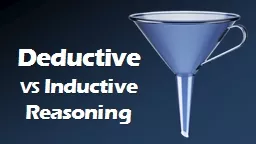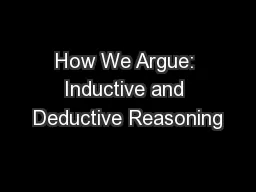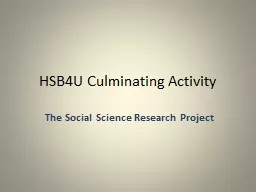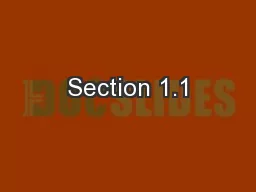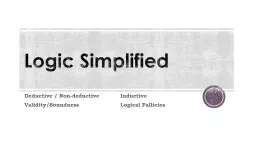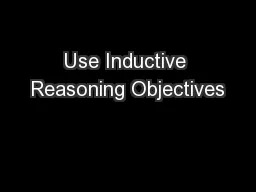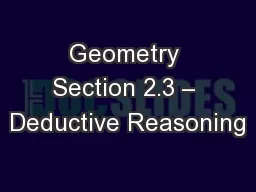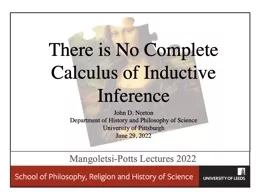PPT-Deductive and Inductive Reasoning
Author : trish-goza | Published Date : 2018-03-19
Mimi Opkins CECS 100 Fall 2011 Problem Solving Logic The science of correct reasoning Reasoning The drawing of inferences or conclusions from known or assumed
Presentation Embed Code
Download Presentation
Download Presentation The PPT/PDF document "Deductive and Inductive Reasoning" is the property of its rightful owner. Permission is granted to download and print the materials on this website for personal, non-commercial use only, and to display it on your personal computer provided you do not modify the materials and that you retain all copyright notices contained in the materials. By downloading content from our website, you accept the terms of this agreement.
Deductive and Inductive Reasoning: Transcript
Download Rules Of Document
"Deductive and Inductive Reasoning"The content belongs to its owner. You may download and print it for personal use, without modification, and keep all copyright notices. By downloading, you agree to these terms.
Related Documents

